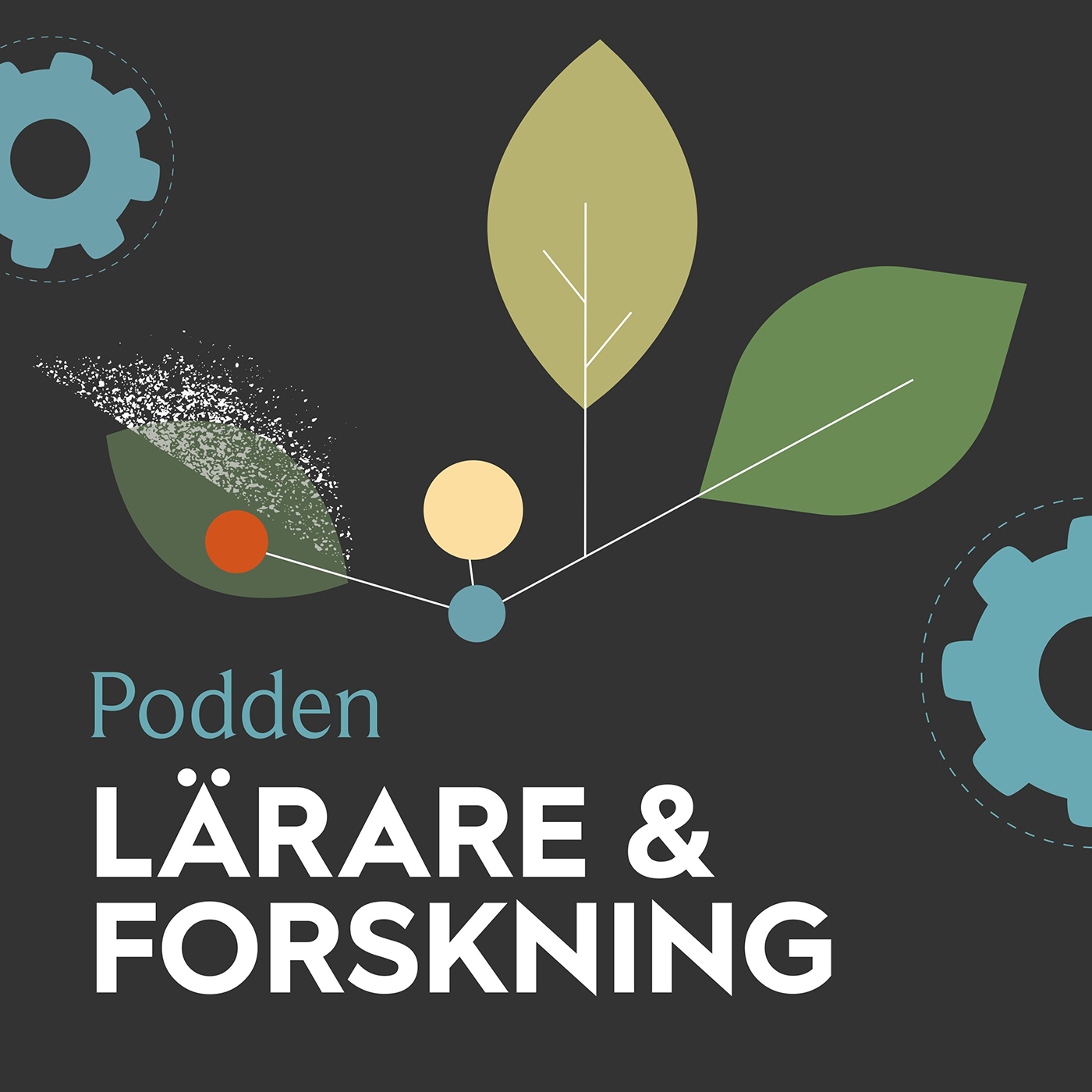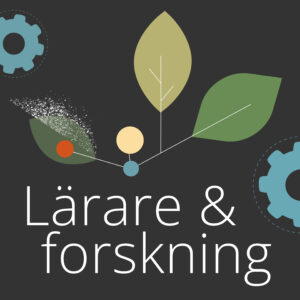Att skapa förutsättningar för elevers teoretiska arbete med bassystemet
DOI:
https://doi.org/10.61998/forskul.v12i1.22924Nyckelord:
bassystemets struktur, ED-programmet, learning activity, learning study, låg- och mellanstadieelever, matematikundervisning, positionssystemAbstract
Syftet med artikeln är att beskriva och exemplifiera matematiska aspekter som mellanstadieelever behöver urskilja för att utforska bassystemets struktur. Datamaterialet är hämtat från en learning study i årskurs 4 med 44 elever, där en iterativt utvecklad lektion har utformats inspirerad av learning activity och El’konin-Davydov-programmet (ED-programmet). Avsikten var att skapa förutsättningar för eleverna att utforska och pröva relationen mellan olika bastal och övergången till successivt större respektive mindre talenheter. I analysen framträder bastalet, entalets representation och tal som mätetal som centrala aspekter för elevernas utforskande av strukturen i bassystemet. Resultatet presenteras med exempel från det iterativa arbetet med att revidera uppgifterna och från de lektioner där uppgifterna prövades.
To create preconditions for students’ theoretical work with the base system
The purpose of the article is to describe and exemplify mathematical aspects that middle school students need to discern in order to explore the structure of the base system. The data material is taken from a Learning study in grade 4 with 44 students, where a lesson was designed inspired by Learning activity and the El’konin-Davydov curriculum (ED curriculum). The purpose of the lesson was to create conditions for students to explore and test the relationship between different base numbers and the transition to successively larger and smaller number units. In the analysis, the base number, the representation of ones and numbers as measurements emerge as central aspects for the students' exploration of the structure of the base system. The results are presented with examples from the iterative work of revising the tasks and from the lessons where the tasks were tested.
Referenser
Bengtsson, H. (2021). Att utveckla mellanstadieelevers kritiska och temporala tänkande: En lärandeverksamhetsteoretisk studie rörande hållbar utveckling. [Doktorsavhandling, Stockholms universitet]. https://su.diva-portal.org/smash/get/diva2:1536041/FULLTEXT01.pdf
Björk, M., Stensland, P. & Stridfält, A. (2019). Tecken på framväxande teoretiskt tänkande om strukturer i bassystemet. Forskning om undervisning och lärande, 7(2), 26–49.
Broman, A., Waermö, M. & Chudinova, E. (2022). The modelling in developmental education: A condition for theoretical abstraction and generalization. Revista Educativa – Revista de Educação, 25(1). https://doi.org/10.18224/educ.v25i1.12762
Carlgren, I. (2012). The learning study as an approach for “clinical” subject matter didactic research. International Journal for Lesson and Learning Studies, 1(2), 1–18. https://doi.org/10.1108/20468251211224172
Chambris, C. (2018). The influence of theoretical mathematical foundations on teaching and learning: a case study of whole numbers in elementary school. Educational Studies in Mathematics, 97(2), 185–207. https://doi.org/10.1007/s10649-017-9790-3
Collins, A. (2011). Representational competence: A commentary on the Greeno analysis. I T. Koschmann (Red.), Theories of learning and studies of instructional practice (s. 105–112). Springer New York. https://doi.org/10.1007/978-1-4419-7582-9
Davydov, V. V. (1990). Types of generalization in instruction: Logical and psychological problems in the structuring of school curricula (J. Teller, Övers.). National Council of Teachers of Mathematics.
Davydov, V. V. (2008). Problems of developmental instruction. A theoretical and experimental psychological study (P. Moxhay, Övers.). Nova Science Publishers. (Originalutgåvan publicerad 1986)
Davydov, V. V., Gorbov, S. F., Mikulina, G. G. & Saveleva, O. V. (2012). Matematikka 2. Vita Press.
Desai, S., Bush, S. B. & Safi, F. (2021). Mathematical representations in the teaching and learning of geometry: A review of the literature from the United States. International Consortium for Research in Science and Mathematics Education (ICRSME). Electronic Journal for Research in Science & Mathematics Education, 25(4), 6–22.
Egorova, A. (2006). Modeling as a condition for creating sensible hypotheses in adolescents (using living creatures organization and functioning hypotheses as an example). Cultural-Historical Psychology, 2(2), 105–117.
Eriksson, H. (2015). Rationella tal som tal. Algebraiska symboler och generella modeller som medierande redskap. [Licentiat-uppsats, Stockholms universitet].
Eriksson, H. (2021). Att utveckla algebraiskt tänkande genom lärandeverksamhet: En undervisningsutvecklande studie i flerspråkiga klasser i grundskolans tidigaste årskurser. [Doktorsavhandling, Stockholms universitet].
Eriksson, I. (2017). Lärandeverksamhet som redskap i en Learning study. I I. Carlgren (Red.), Undervisningsutvecklande forskning: exemplet Learning study (s. 61–84). Gleerups Utbildning AB.
Eriksson, I., Wettergren, S., Fred, J., Nordin, A.-K., Nyman, M. & Tambour, T. (2019). Materialisering av algebraiska uttryck i helklassdiskussioner med lärandemodeller som medierande redskap i årskurs 1 och 5. Nordic Studies in Mathematics Education, 24(3–4), 81–106.
Fishbein, B., Foy, P. & Yin, L. (2021). TIMSS 2019 Item Percent Correct Statistics – Grade 8. TIMSS 2019 User Guide for the International Database (2 uppl.) [Dataset]. Boston College, TIMSS & PIRLS International Study Center website. https://timssandpirls.bc.edu/timss2019/international-database/
Goldin, G. A. (2014). Mathematical representations. I S. Lerman (Red.), Encyclopedia of mathematics education, (s. 409–413). Springer. https://doi.org/10.1007/978-94-007-4978-8_103
Hansson, H. (2019). Betydelsen av att variera innehållsliga aspekter för yngre elevers lärande av platsvärde. Forskning om undervisning och lärande, 7(3), 48–74.
Kaput, J. (1987). Representation systems and mathematics. I C. Janvier (Red.), Problems of representation in the teaching and learning of mathematics (s. 19–26). Lawrence Erlbaum Associates.
Kiselman, C. & Mouwitz, L. (2008). Matematiktermer för skolan. Nationellt centrum för matematikutbildning (NCM). Göteborgs universitet.
Lafay, A., Osana, H. P. & Levin, J. R. (2023). Does conceptual transparency in manipulatives afford place-value understanding in children at risk for mathematics learning disabilities? Learning Disability Quarterly, 46(2), 92–105. https://doi.org/10.1177/07319487221124088
Latif, S., Qayyum, J., Lal, M. & Kahn, F. (2011). Novel approach to the learning of various number systems. International Journal of Computer Applications, 26(7), 0975–8887. https://doi.org/10.5120/3116-4283
Lillvist, A. (2022). Från forskningsetiska principer i praktiknära forskning till en praktiknära etik? I I. Eriksson & A. Öhman-Sandberg (Red.), Praktikutvecklande forskning mellan skola och akademi. Utmaningar och möjligheter vid samverkan (s. 69–81). Nordic Academic Press.
Linell, P. (1994). Transkription av tal och samtal: teori och praktik. Linköpings universitet, Tema kommunikation.
Lortie-Forgues, H., Tian, J. & Siegler, R. S. (2015). Why is learning fraction and decimal arithmetic so difficult? Developmental Review, 38, 201–221. https://doi.org/10.1016/j.dr.2015.07.008
Ma, L. (2020). Knowing and teaching elementary mathematics: teachers' understanding of fundamental mathematics in China and the United States. Routledge.
Mainali, B. (2021). Representation in teaching and learning mathematics. International Journal of Education in Mathematics, Science and Technology, 9(1), 1–21. https://doi.org/10.46328/ijemst.1111
Marton, F. (2015). Necessary conditions of learning. Routledge.
McIntosh, A. (2008). Förstå och använda tal: en handbok. Nationellt centrum för matematikutbildning (NCM), Göteborgs universitet.
Mullis, I. V. S., Martin, M. O., Foy, P. & Hooper, M. (2016). Percent correct for the TIMSS 2015 items mathematics eighth grade [Dataset]. Boston College, TIMSS & PIRLS International Study Center website. https://timssandpirls.bc.edu/timss2015/international-database/
Ni, Y. & Zhou, Y.-D. (2005). Teaching and learning fraction and rational numbers: The origins and implications of whole number bias. Educational Psychologist, 40(1), 27–52. https://doi.org/10.1207/s15326985ep4001_3
Osana, H. P., Adrien, E. & Duponsel, N. (2017). Effects of instructional guidance and sequencing of manipulatives and written symbols on second graders’ numeration knowledge. Education Sciences, 7(2), 52. https://doi.org/10.3390/educsci7020052
Quennerstedt, A., Harcourt, D. & Sargeant, J. (2014). Forskningsetik i forskning som involverar barn: Etik som riskhantering och etik som forskningspraktik. Nordic Studies in Education, 34(2), 77–93.
Radford, L. (2014). The progressive development of early embodied algebraic thinking. Mathematics Education Research Journal, 26, 257–277. https://doi.org/10.1007/s13394-013-0087-2
Rau, M. A. (2017). Conditions for the effectiveness of multiple visual representations in enhancing STEM learning. Educational Psychology Review, 29, 717–761. https://doi.org/10.1007/s10648-016-9365-3
Rennstam, J. & Wästerfors, D. (2011). Att analysera kvalitativt material. I G. Ahrne & P. Svensson (Red.), Handbok i kvalitativa metoder (s. 194–210). Liber AB.
Roth, W. M. & Radford, L. (2011). A cultural-historical perspective on mathematics teaching and Learning. SensePublishers. https://doi.org/10.1007/978-94-6091-564-2
Schmittau, J. (2003). Beyond constructivism and back to basics: a cultural historical alternative to the teaching of the base ten positional system. I B. Rainforth & J. Kugelmass (Red.), Curriculum and instruction for all learners: Blending systematic and constructivist approaches in inclusive elementary schools (s. 113–132). Brookes Publishing.
Siegler, R. S. & Lortie-Forgues, H. (2017). Hard lessons: Why rational number arithmetic is so difficult for so many people. Current Directions in Psychological Science, 26(4), 346–351.https://doi.org/10.1177/0963721417700129
Skolverket. (2022). Kommentarmaterial till kursplanen i matematik. Grundskolan. Reviderad 2022.
Slovin, H. (2011). Revelations from counting: A window to conceptual understanding. Investigations in Mathematics Learning, 3(2), 35–51. https://doi.org/10.1080/24727466.2011.11790302
Slovin, H. & Dougherty, B. J. (2004). Children´s conceptual understanding of counting. Proceedings of the 28th Conference of the International Group for the Psychology of Mathematics Education, (4), 209–216.
Steinle, V. (2004). Changes with age in students’ misconceptions of decimal numbers. [Doktorsavhandling, University of Melbourne].
Thomas, N. D. (1998). Children’s understanding of the number system. [Doktorsavhandling, Macquarie University].
Venenciano, L., Slovin, H. & Zenigami, F. (2015). Learning place value through a measurement context. I X. H. Sun, B. Kaur & J. Novotná (Red.), Proceedings of the international commission on mathematical instruction Study 23. Primary Mathematics Study on Whole Number (s. 575–582). University of Macau.
Vermeulen, J. A., Béguin, A., Scheltens, F. & Eggen, T. J. H. M. (2020). Diagnostic assessment in third-grade subtraction: the relation between bridging errors, number of errors and mathematical ability. Assessment in Education: Principles, Policy & Practice, 27(6), 687–706. https://doi.org/10.1080/0969594X.2020.1856038
Vetenskapsrådet. (2017). God forskningssed. [Elektronisk resurs]
Vygotsky, L. S. (1986). Thought and language (E. Hanfmann & G. Vakar, Översätt.; 2 uppl.). MIT Press. (Originalutgåvan publicerad 1934)
Vygotsky, L. S. (1997). The problem of the development of higher mental functions. I R. W. Rieber (Red.), The collected works of L. S. Vygotsky: The history of the development of higher mental functions, Vol. 4 (s. 1–26) (M. J. Hall, Övers.). Plenum Press.
Zuckerman, G. (2004). Development of reflection through learning activity. European Journal of Psychology of Education, 19(1), 9–18. https://www.jstor.org/stable/23421398
Zuckerman, G. (2022). Learning task as the heart of learning activity. Revista Educativa-Revista de Educação, 25(1). https://doi.org/10.18224/educ.v25i1.12644
Downloads
Publicerad
Referera så här
Licens
Copyright (c) 2024 Marie Björk, Diana Berthén

Det här verket är licensierat under en Creative Commons Erkännande 4.0 Internationell-licens.
Författare till innehåll publicerat i Forskul behåller upphovsrätten till sina verk. Artiklar publiceras under villkoren i en Creative Commons-licens CC BY, som tillåter användning, nedladdning, distribution, länkning till och reproduktion i vilket medium som helst, förutsatt att originalverket är korrekt citerat.






